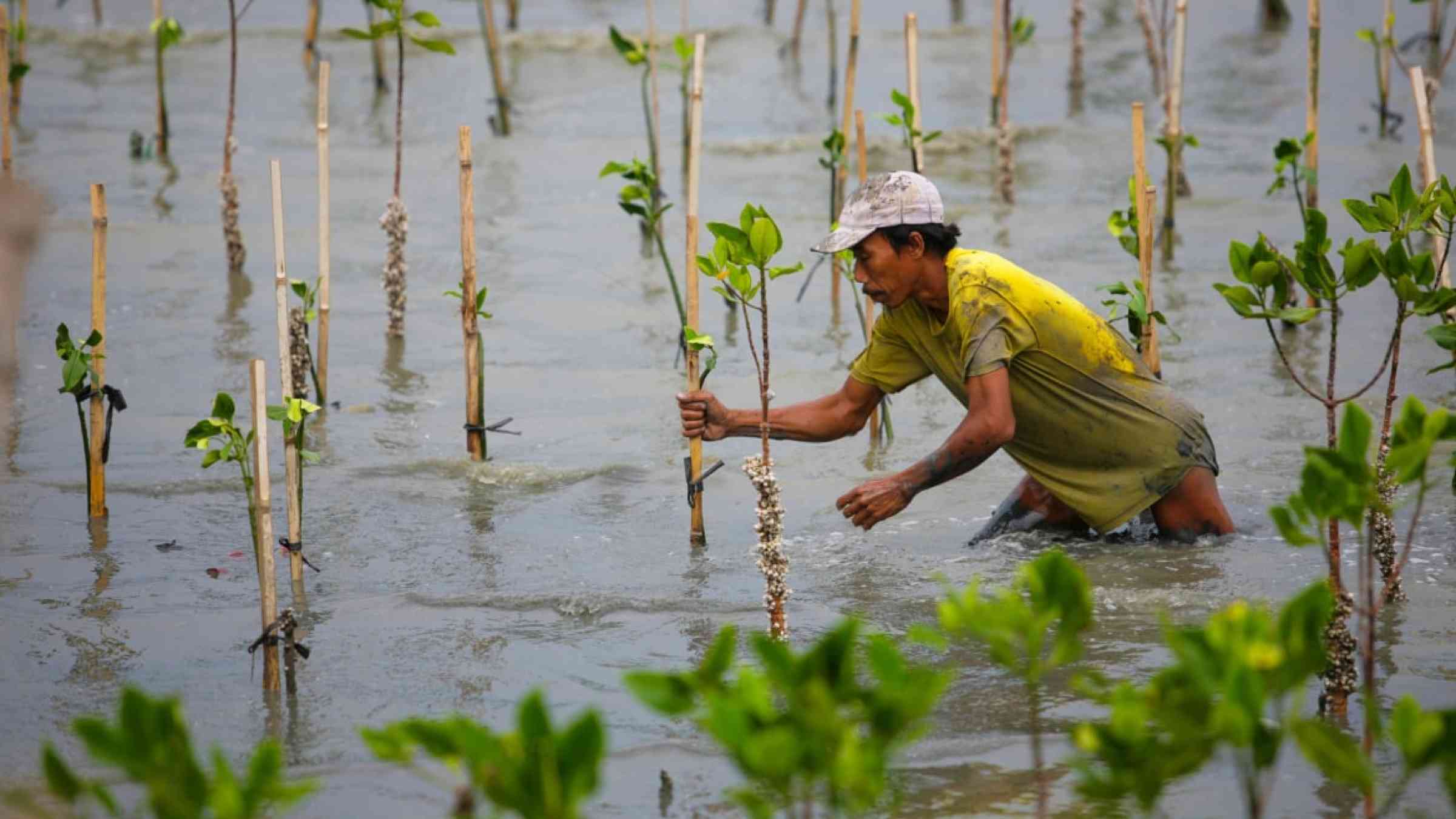The cost-effectiveness of nature-based solutions for reducing disaster risk

Although nature-based solutions are widely recognised by international frameworks and national policies, the economic viability and equity implications of them as potential solutions to reduce disaster risks requires further exploration.
A recent study, led by Marta Vicarelli from the University of Massachusetts Amherst, addresses this critical gap by developing a comprehensive database of peer-reviewed studies that analyse the economic and social impacts of NbS.
Building a global knowledge base for Eco-DRR and EbA
This study centres on two primary forms of nature-based solutions (NbS): Ecosystem-based Disaster Risk Reduction (Eco-DRR) and Ecosystem-based Climate Change Adaptation (EbA). Both approaches are designed to bolster resilience by utilising natural ecosystems-such as wetlands, coastal areas, forests, and mangroves-to mitigate risks like flooding, erosion, and storms.
The research team compiled data from 402 observations across 87 peer-reviewed studies, resulting in a comprehensive database that highlights the effectiveness, funding structures, and socio-economic outcomes of these interventions.
This in-depth review builds on a broader global assessment of more than 500 studies that analyse Eco-DRR approaches. By concentrating on the economic dimensions of these nature-based strategies, the research adds to the growing body of evidence supporting their use as effective alternatives to traditional engineering-based solutions.
Cost-effectiveness and socio-economic benefits
A key finding of the study is that over 80% of the reviewed studies found NbS to be more cost-effective than conventional engineering solutions for disaster risk reduction. Beyond offering direct economic benefits by shielding communities from environmental hazards, these interventions provide significant co-benefits, such as biodiversity restoration, improved water quality, and carbon sequestration-all of which support long-term socio-economic resilience.
However, cost-effectiveness is context-dependent. Around 24% of the studies reviewed pointed out that while NbS are generally effective, their success often hinges on factors such as geographic location and ecosystem type. Mangroves, wetlands, and coastal ecosystems emerged as consistently among the most effective in disaster mitigation, with robust evidence of their ability to reduce risks associated with flooding and storms.
Social justice and equity impacts
The study also explores the equity implications of NbS, going beyond purely economic considerations. It underscores the vital role of local and indigenous communities in ecosystem stewardship, highlighting the importance of inclusive decision-making processes. By adopting participatory approaches, NbS policies can more effectively reflect the needs and preferences of marginalised groups, ensuring equitable distribution of benefits across socio-economic boundaries.
The review also identified gaps in the existing literature concerning the social justice aspects of NbS. Further research is needed to evaluate how various income groups benefit from ecosystem-based interventions, especially in regions where vulnerable populations are most at risk from climate-related disasters.
Scaling-up with finance
One of the critical insights from the study is the need for more comprehensive approaches to financing NbS. At present, most NbS projects are funded by the public sector, but there is increasing recognition of the potential role of blended public-private partnerships in scaling these interventions to meet global challenges. Engaging private sector finance in green infrastructure could be key to expanding these efforts on a larger scale.
The authors also note that the success of NbS is often linked to property rights. Effective governance structures are crucial for managing and restoring ecosystems, and financing models must take into account different property ownership arrangements.
Challenges and research gaps
Despite the promise of NbS, the review highlights several challenges and research gaps. A major issue is the lack of a globally standardised approach for monitoring and evaluating NbS performance, which complicates comparisons of effectiveness across different ecosystems and regions. Additionally, some hazards-such as drought-are underrepresented in the current literature, despite their significant impact on millions worldwide.
The study concludes by strongly endorsing NbS as a sustainable and cost-effective solution for disaster risk reduction and climate adaptation, finding that NbS not only provide immediate economic benefits but also contribute to long-term social and environmental resilience. However, as climate change accelerates and disasters become more frequent and severe, the study emphasises further research into the biodiversity benefits of NbS and their long-term effectiveness is needed.
This research offers key timely insights into the viability of nature-based solutions, providing a foundation for informed decision-making by policymakers and stakeholders. By considering both the economic and social dimensions of NbS, we can develop a more holistic understanding of how natural ecosystems can contribute to mitigating global disaster risks and enhancing climate adaptation efforts.